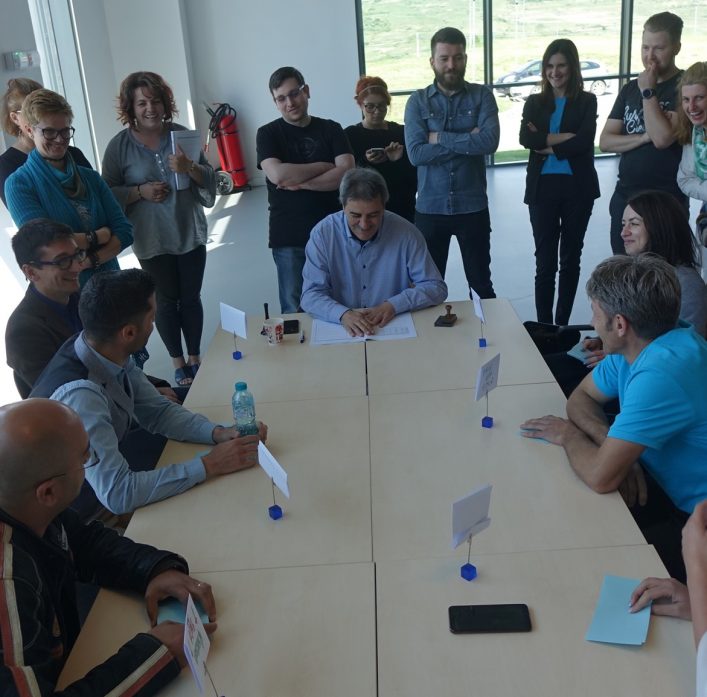Depending on the individual learning objectives (both of the company and of the participants) the content of the training is adapted to the needs of the clients – with focus on knowledge about financial aspects and those related to business management or on knowledge related to strategy and necessary actions, or both.
Financial knowledge
The fictive company’s cash flow values are materialized through coins, credit markers, small bolts, boxes, and other simulation-specific materials. This is the highest expression of long-term learning – learning through visualization and tactile sense. Participants will complete the three documents of a financial year at the end of each period, calculate the relevant figures and cost structure and analyze the financial models as a basis for future decisions.
Strategy
As members of competing companies, participants will develop individual strategies by making decisions about products, factories, production size, price structure, sales channels, process optimization, quality management, etc.
After each year, the effects and interdependencies of short and medium-term decisions are identified and analyzed.
Massive competitive changes are also taken into account, discussed and then decided in each case.
Internal processes and the connection between them
By identifying and analyzing strategic decisions, visualizing flows within the company and using simulation materials (coins, indicators, boxes), participants will also identify and analyze:
– Which departments collaborated, when, and in what way so that the company was successful? What interdependencies appear in this collaboration?
– Which of the strategic decisions had an impact and what was their impact on the improvement or deterioration of the business processes and implicitly on the success of the company?


